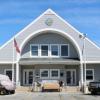Bill Reardon opened a historical window for me recently, and I’m still looking through to see what I can see. It was in the last couple of weeks before he died and we were talking in his house on Savannah Road.
Bill was connecting dots between his boyhood in Wilmington and the many decades of raising his family in Lewes. His own father was a lawyer and a judge, and Bill grew up in a neighborhood where other judges lived, and - no surprise in Wilmington - people who worked for the DuPont company and members of the wealthy family.
One of the families in the neighborhood helped provide chauffering services for Pierre S. du Pont, chairman of the board of the DuPont company from 1919 to 1940, and John Jacob Raskob, who served as treasurer of the company during P.S. du Pont’s tenure. A young man with a strong back, Bill remembered getting enlisted from time to time to help with occasional moving chores for the du Ponts. He enjoyed getting an inside view of one of the nation’s most prominent families of the 20th century.
Discussions of the du Ponts tend to be grand. It’s a world of gunpowder and wars, great mansions and gardens, giant corporations, presidential politics, and philanthropy and public works at the state and national level of almost unimaginable scale.
Our conversation touched on P.S. du Pont’s years as chairman of DuPont. During those years, P.S. also served for a period of time as chairman of General Motors. He and Raskob were involved with construction of the Empire State Building in New York City. Pierre S. du Pont is also widely known for his estate north of Wilmington called Longwood, now popularly known as Longwood Gardens. A 1938 work by the Federal Writers Project - Delaware, A Guide to the First State - said of Longwood: “The gardens and conservatories - the latter includes two acres under glass - comprise what has been called the finest privately owned horticultural collection in the world.”
Always public-spirited, du Pont opened the gardens to everyone. That tradition continues today.
P.S. du Pont’s greatest lasting contribution to his home state, however, was in the realm of public education. It’s estimated that he spent more than $9 million of his own money building hundreds of schools in Delaware during the early part of the 20th century. It was a time of segregation of the races. Prior to du Pont’s involvement there were very few schools for so-called colored - non-white - students. Du Pont’s efforts, in cooperation with the progressive political structure of the state under the leadership of Gov. John G. Townsend of Sussex, resulted in a quantum educational leap for students of all races.
In Lewes, this major boost for public education resulted in the simultaneous construction in 1921 of the Lewes School on Savannah Road for white students and the nearby DuPont Avenue School for colored students. Du Pont’s funds, according to a 2009 article in the Lewes Historical Society Journal by Hazel Brittingham, helped acquire the 10-acre and 8.5-acre sites, respectively, for the two schools, as well as fund their construction.
The Brittingham article notes that P.S. du Pont and his wife came to Lewes by train on May 9, 1922, for a formal dedication.
Bill brought the story full circle for me. He said the house he raised his family in on Savannah Road - the house where he eventually drew his last breath - was once occupied by the inspector for the school construction projects in Lewes. It stands less than a block away from the Lewes School and the adjacent DuPont Avenue School which now houses the Sussex Consortium. “Mr. du Pont employed onsite inspectors for every one of the school construction projects he sponsored throughout the state,” said Bill.
“He bought and sold lots of houses for those inspectors, and this was one of them.”
Bill admired P.S. du Pont’s dedication to the educational advancement of the common man and was proud to be connected in any kind of way.





















































